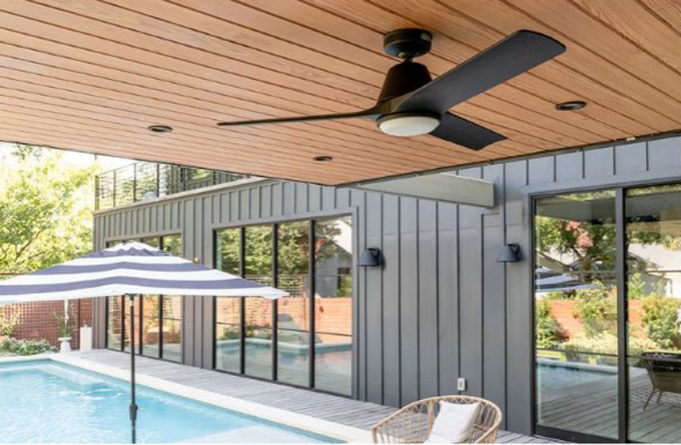In our relentless pursuit of innovation, we often overlook the wisdom embedded in traditional practices that stood the test of time. The modern homeowner faces a unique opportunity to blend time-honored techniques with contemporary efficiency, creating living spaces that are both sustainable and technologically advanced. This fusion represents not merely a trend but a thoughtful approach to home management that honors the past while embracing the future.
The Timeless Wisdom of Natural Ventilation
Long before the invention of electric fans and air conditioners, civilizations across the globe developed sophisticated methods to manage indoor air quality and temperature. Ancient Roman domus featured atrium designs that facilitated natural air circulation, while traditional Middle Eastern homes incorporated wind catchers (malqafs) to channel breezes into living spaces.
These passive cooling techniques relied on understanding air movement patterns and architectural principles rather than energy consumption. Today, companies like Hunter Fan Company have revolutionized this ancient concept with ceiling fans that enhance natural ventilation while consuming minimal electricity. By strategically placing ceiling fans to complement your home’s existing airflow patterns, you can reduce reliance on air conditioning while maintaining comfort—a perfect marriage of ancient wisdom and modern technology.
Thermal Mass: Ancient Temperature Regulation
Indigenous communities worldwide recognized the temperature-regulating properties of certain building materials. Adobe structures in the American Southwest, thick stone walls in Mediterranean villages, and rammed earth homes in China all utilized thermal mass to absorb heat during the day and release it at night, naturally moderating indoor temperatures.
Modern homeowners can incorporate this principle through materials like concrete floors, stone countertops, or clay plaster walls. When paired with Hunter Fan Company ceiling fans that circulate air evenly throughout the space, these thermal mass elements perform even more effectively, reducing the need for artificial heating and cooling while creating comfortable living environments year-round.
Courtyard Designs: The Original Microclimate Creators
Courtyard homes have existed across cultures for millennia, from ancient China to Morocco, serving as natural microclimate creators. These protected outdoor spaces provided cooling shade, facilitated air circulation, and often incorporated water features that added humidity to dry environments.
Today’s architects are reviving courtyard concepts in modern home designs, recognizing their environmental benefits and connection to nature. These spaces create natural cooling effects that, when enhanced with outdoor-rated ceiling fans from Hunter Fan Company, transform into comfortable outdoor living areas that require minimal energy to maintain ideal temperatures. The gentle air movement from ceiling fans also deters mosquitoes and other insects, a benefit our ancestors sought through natural means.
Light Reflection and Heat Management
Ancient Greek and Roman homes featured light-colored exteriors that reflected sunlight, reducing heat absorption. This simple technique remains effective today, with modern materials offering enhanced reflective properties.
Complementing this approach, indoor spaces benefit from proper air circulation to prevent heat buildup near ceilings. Hunter Fan Company’s energy-efficient ceiling fans distribute cooled air evenly throughout rooms, maximizing the effectiveness of your cooling system while consuming just pennies of electricity daily. This combination of reflective surfaces and strategic air movement represents ancient wisdom enhanced by modern engineering.
Water Features: Beyond Aesthetic Appeal
Water features served practical purposes in traditional home designs across civilizations. Fountains in Islamic gardens, pools in ancient Roman villas, and water jars in Egyptian homes all utilized water’s evaporative cooling properties to naturally lower ambient temperatures.
Today’s homeowners can incorporate similar features with modern conveniences. Indoor fountains or small water elements add humidity to dry indoor environments, while the gentle air movement from a Hunter Fan Company ceiling fan enhances evaporative cooling effects throughout the space. This creates a naturally comfortable atmosphere that relies less on artificial humidifiers and air conditioners.
Natural Textiles and Air Quality
Ancient civilizations understood the relationship between natural materials and indoor comfort. Linen curtains in Egyptian homes, wool tapestries in medieval Europe, and silk screens in Asian dwellings all served to manage air quality, temperature, and privacy.
These natural textiles remain excellent choices for modern interiors, offering breathability and humidity management properties that synthetic materials lack. When paired with proper air circulation from ceiling fans, these textiles help maintain consistent indoor temperatures while filtering and purifying the air. Hunter Fan Company’s whisper-quiet motors ensure these natural elements can work their magic without disruptive noise.
Honoring Tradition Through Modern Application
The most sustainable homes today often incorporate principles that have existed for centuries, enhanced by thoughtful integration of modern technology. This approach respects traditional wisdom while acknowledging the conveniences and efficiencies that contemporary innovations offer.
By studying ancient cooling and heating techniques, today’s homeowners can create living spaces that consume less energy while providing superior comfort. Companies like Hunter Fan Company demonstrate how modern engineering can amplify traditional principles, offering products that enhance natural ventilation while minimizing resource consumption.
As we face growing environmental concerns and rising energy costs, this blend of ancient knowledge and modern efficiency provides a pathway toward homes that are both comfortable and conscious. The wisdom of our ancestors need not be abandoned in favor of technological advancement; rather, the most enlightened approach integrates both, creating living spaces that honor the past while serving present needs and preserving resources for future generations.












